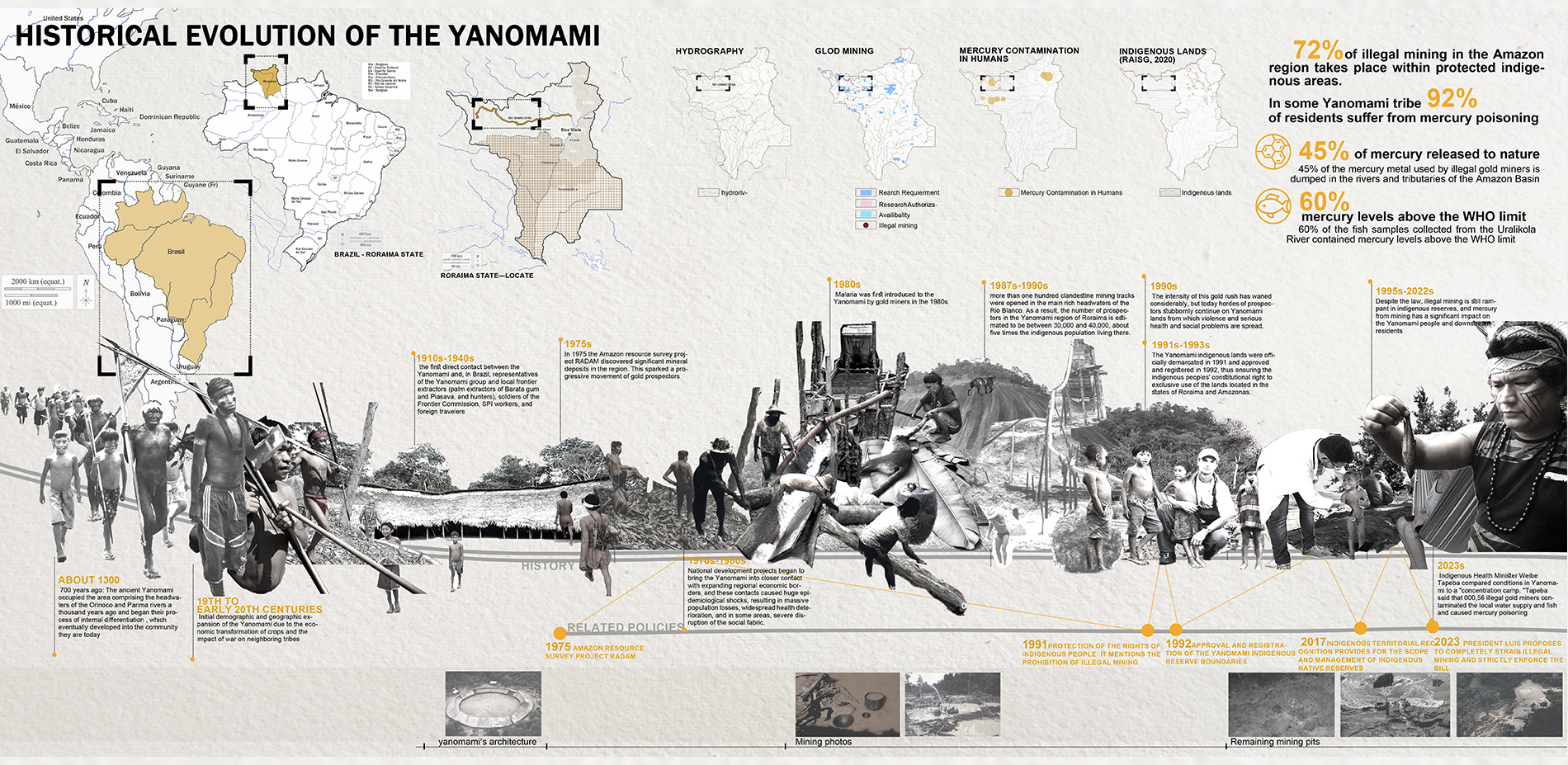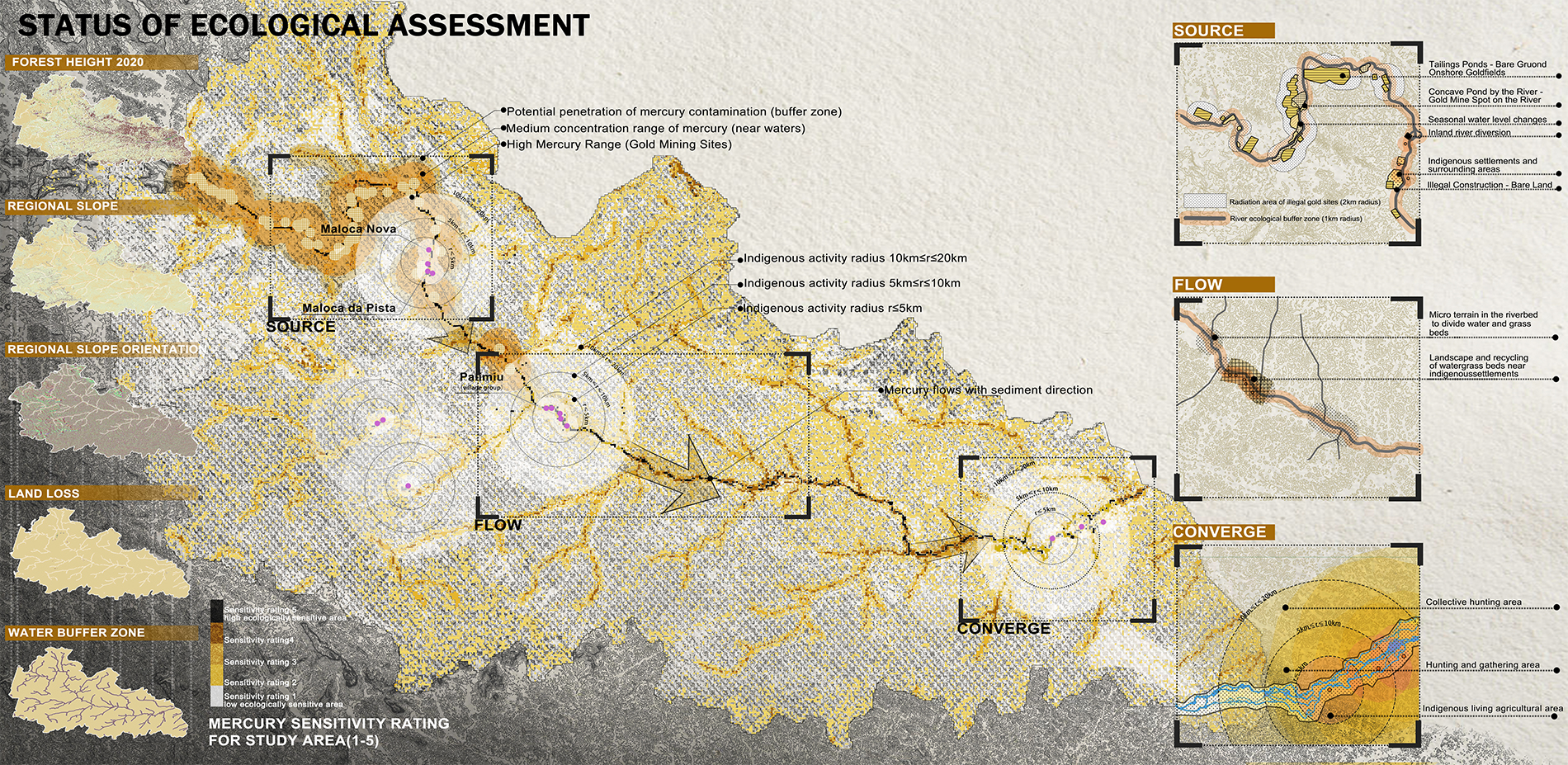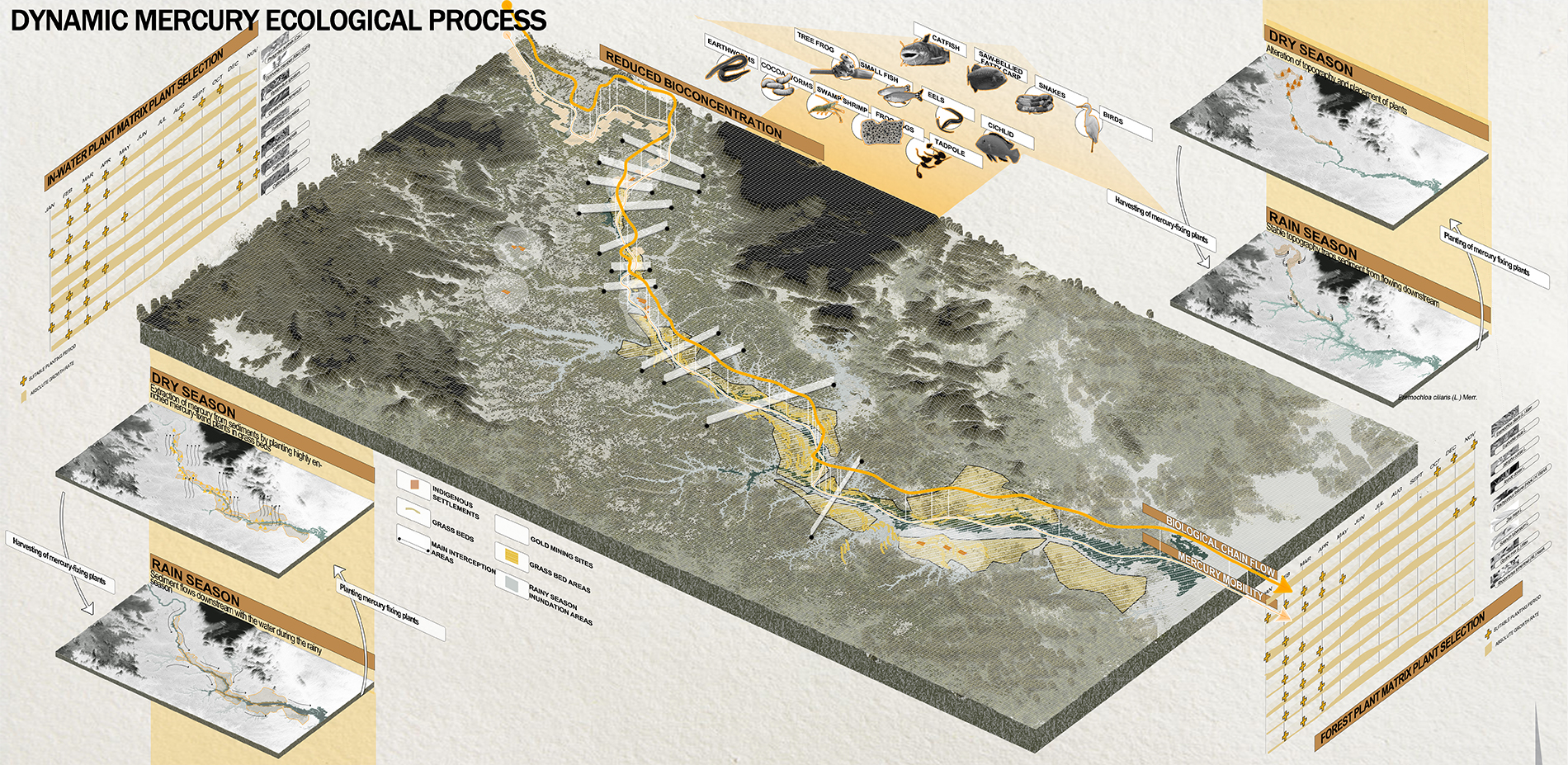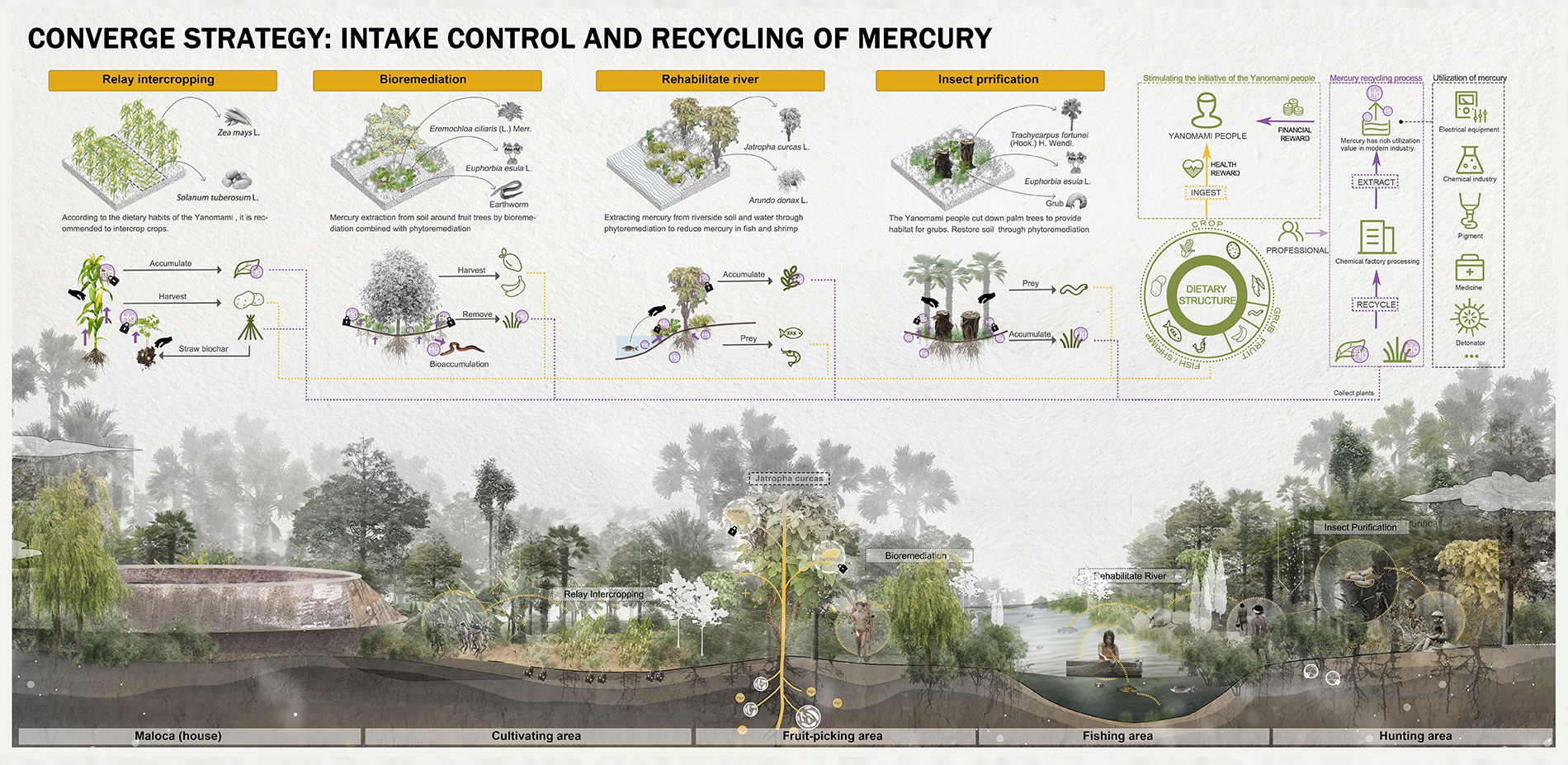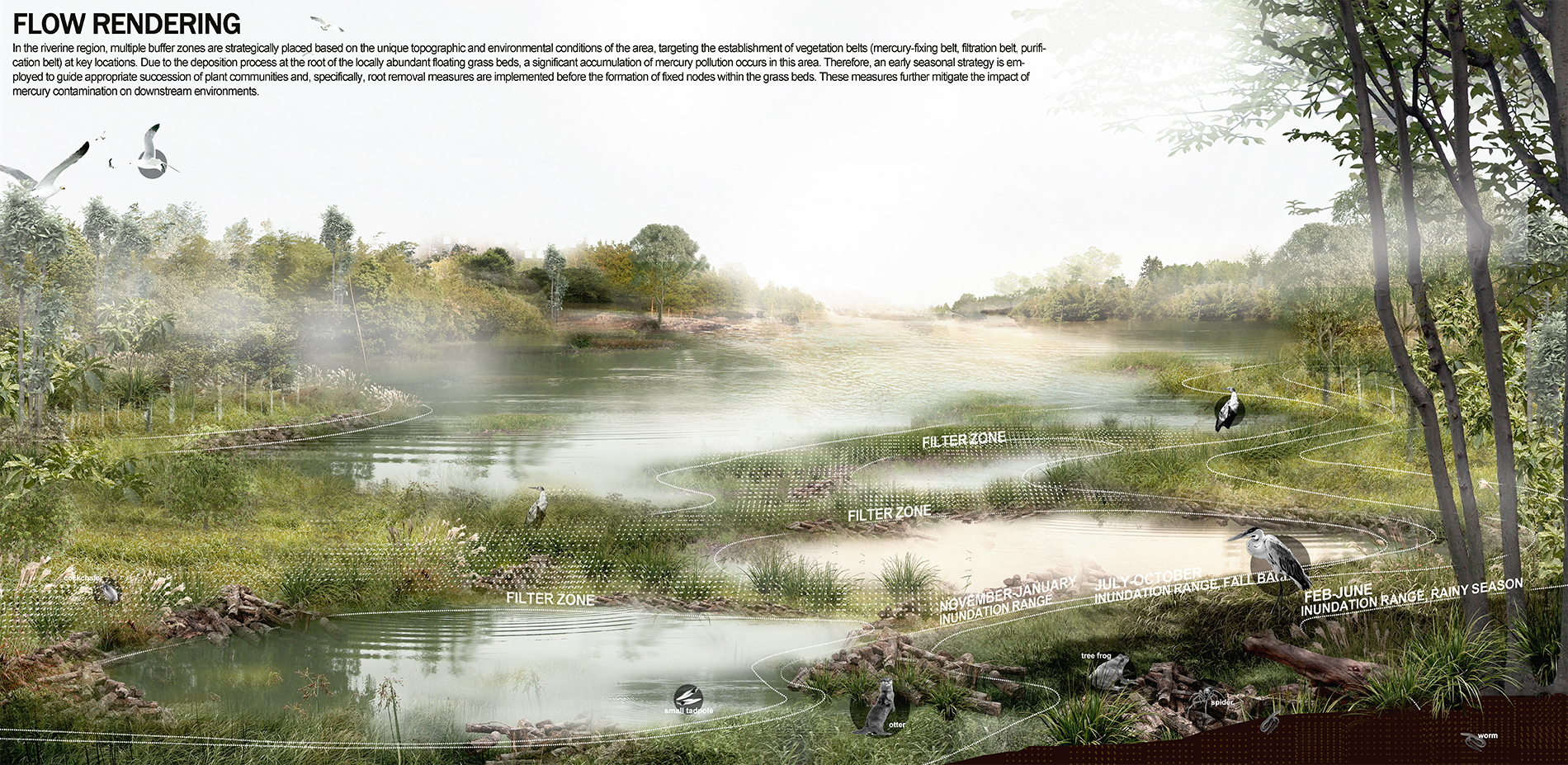Reviving Yanomami Rights: Plant Matrix for Mercury Management
Award of Excellence
General Design
Alto Alegre, Amajari, Roraima, Brazil
Yuxin Jiang;
Wei Gui, Student International ASLA;
Zhengfei Yan, Student International ASLA;
Yingjie Hu, Student International ASLA;
Yunshan Wan, Student International ASLA;
Shiqian Yang;
Faculty Advisors:
Cundong Li;
Shanghai Jiaotong University
Sichuan University
Southeast University
China Architecture Design & Research
Wonderful research and narrative clear processes that mitigate mercury contamination no specific site is identified but a large catchment area. interesting outcomes renderings beautifully show application of strategies. Project has a good premise and proposal. Clear strategies, good research, and excellent graphic diagrams to explain process.
- 2023 Awards Jury
Project Statement
The illegal ASGM in Brazil has brought disasters to local indigenous people, including a series of problems dominated by mercury pollution in the ASGM process.
Based on this, we propose an ecological strategy with mercury recovery as the main line.
We determine the ecological process of mercury in the study area, so as to determine a complete strategy of mercury interception, mercury absorption, mercury collection, and mercury recovery. This is complemented by several strategies of land restoration, forest restoration, and indigenous economic revival.
Through external interventions, the injured lands will be restored to their former vitality. In the future, the indigenous people will be able to develop healthily on the land.
Project Narrative
Project Background
A large-scale artisanal gold rush has developed in the Yanomami indigenous land area since the 1980s, and although the intensity of the rush has diminished considerably since 1990, by 2020 there are still a large number of active illegal miners, which poses multiple problems for indigenous
1. Artisanal small-scale gold mining (ASGM) leads to significant mercury exposure in nature
2. Mercury enters the food chain, causing serious health problems for indigenous people
3. Bare ground and tailings ponds left by illegal gold mines have resulted in reduced forest areas, soil erosion and malaria outbreaks
4. The high profit bubble from illegal gold mining has led to the disruption of the Yanomami industry.
Zoning Analysis and Strategy
The Uraricoera River (waikás, palimiu, and Uraricuera sections) was identified as the study area for this study. Through superimposed analysis, this was used to assess the level of mercury exposure and the level of damage to forests, land, and riverbeds at various locations within the study area, and to determine the ASGM damage accordingly.
1. Mercury source area: waikás
For the mercury source area, we summarized several types of topographic combinations in the mercury source area based on the data. (1) Forest and soil type: The next 5 to 10 years is the restoration period to form a forest matrix to improve the resistance of the forest to external disturbance. (2) Pits and tailings ponds: Sloping terrain is transformed into terraced terrain for soil and water conservation; soil in pits combines physical and chemical means to collect mercury. (3) Riverside tailings sites: Floating islands are set up in low-flow waters, where highly enriched plants are planted to absorb mercury. For high velocity waters, set up in-water dust removal devices to intercept contaminated soil.
2. Mercury flow area: palimiu
Our functional settings for the mercury flow area mainly focus on: (1) Phytoremediation and microorganisms: microorganisms promote plant growth and plant growth process isolates mercury ions. (2) Mercury adsorption plant sites and isolation barrier zone: mercury adsorption plant sites combined with the isolation zone to guide pollutants to avoid further spread of pollutants. (3) Plant buffers: Set up multiple plant buffers and adjust the microtopography to promote mercury deposition. (4) Mercury and pollutant recovery: In the dry season, recover plant roots that have accumulated large amounts of mercury. During the transition period, rotate plants that are highly enriched in elemental mercury. In the rainy period, sink part of the plant bed into the water depth to adsorb mercury.
3. Converage area: Uraricuera
In the converage area, we propose a parallel strategy based on ecological restoration and industrial development: (1) Intermediate rotational field agriculture: potato and maize are chosen as intercrops. To alleviate the hunger of indigenous people. At the same time, most of the mercury accumulates in corn leaves, which can be recycled to prevent mercury from continuing to participate in the natural cycle. (2) Bioremediation: build an ecological structure of fruit trees - plants that adsorb mercury - organisms (earthworms, etc.). (3) Restoration of rivers: Mercury is adsorbed by aquatic plants to stop it from eventually entering the food chain. (4) Purification of insects: By plants adsorbing residual mercury in the soil and purifying insect habitats.
Plant List:
- Elodea canadensis
- Myriophyllum spicatum
- Ceratophyllum demersum
- Fontinalis antipyretica
- Callitriche stagnalis
- Callitriche hamulata
- soybean
- Solanum tuberosum
- jatropha
- Zea mays
- Trachycarpus fortunei
- Euphorbia esula
- Nephrolepis cordifolia
- Rhodomyrtus tomentosa

